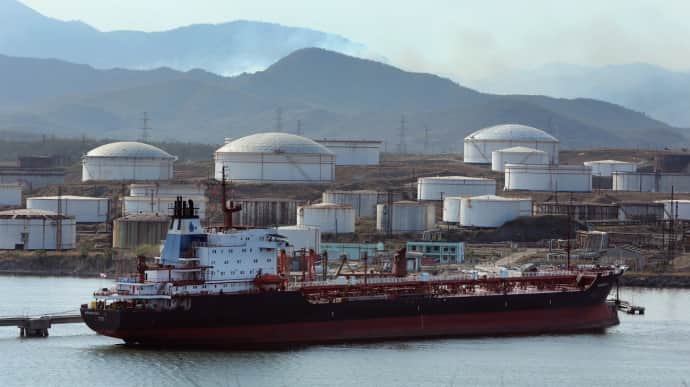Russia's shadow fleet grows in power despite Western sanctions

Moscow's ability to transport oil on old uninsured vessels has increased by 70% since 2023.
Source: Financial Times, citing a KSE (Kyiv School of Economics) report
Details: The amount of Russian oil carried by ill-maintained and poorly insured tankers rose from 2.4 million barrels per day in June 2023 to 4.1 million in June 2024.
This shift has emerged at a time when the US, Canada, Japan and European allies have been increasingly aiming their sights at global insurers and shipowners in an effort to curb Moscow's ability to profit from the war in Ukraine.
They have also added companies and individual vessels linked to Russia's shadow fleet to the sanctions list.
Many of these vessels increase the risk of environmental disasters for the EU and neighbouring countries as they regularly sail through busy European waters, including the Baltic Sea, the Danish Straits and the Strait of Gibraltar.
To reduce these risks, KSE proposes that "shadow-free zones" be created in European waters.
In June 2024, 70% of Russian oil transported by sea was carried by the shadow fleet, which, according to KSE’s estimates, cost Russia US$10 billion to collect. This included 89% of Russia's total crude oil deliveries, most of which have been trading above the price cap of US$60 per barrel since the middle of 2023, and 38% of Russia's refined product exports.
When Moscow assembled this fleet, it severed ties with the price-capping coalition countries that had been putting pressure on global insurance companies to follow the sanctions regime, reducing Russia's options to mostly domestic insurers.
This has reportedly raised serious concerns about the quality, reliability and scope of such insurance cover. Taking account of the age of the tankers, which averages 18 years, and the lack of adequate insurance, these vessels could be considered to be extremely dangerous.
There have already been several accidents involving shadow vessels linked to Russia. This March, the Andromeda Star, a 15-year-old shadow tanker, collided with another ship near Denmark. There was no oil spill because it was empty and on its way back to Russia.
Shadow fleet vessels used to transport oil from other sanctioned sellers have also experienced engine failures, indicating maintenance issues and explosions. A 27-year-old Gabon-flagged vessel with a capacity of 700,000 barrels, which was used for transporting Iranian oil, suffered a powerful explosion near Indonesia in May 2023 while it was empty.
Several shadow fleet vessels have been involved in oil spills, with some fleeing the scene after causing environmental damage. The 23-year-old Ceres I, which had previously been involved in oil trading with Iran, collided with another tanker near Singapore in 2019, turned off its signal and attempted to escape before being detained by the Malaysian coast guard.
Background:
- New unidentified buyers suspected of having ties with Russia have begunto accumulate dozens of vessels capable of carrying liquefied natural gas (LNG), indicating that Moscow is expanding its shadow fleet of gas tankers.
- Russia has created a shadow fleet to move its oil around the world, but there is now growing evidence that Moscow has begun to create a fleet for LNG as well.
Support UP or become our patron!





